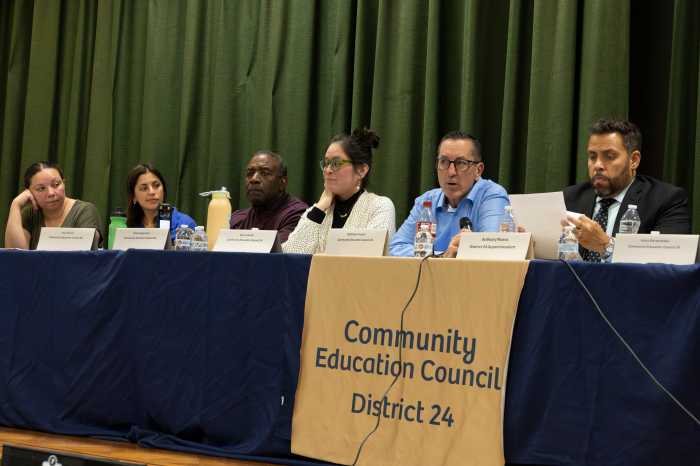A new law that puts graffiti cleanup in the hands of property owners, in effect since April 1, has gained a mostly-positive response from residents in the Woodhaven area, where graffiti has been a hot-button issue for the last several months.
The law was originally signed by Mayor Michael Bloomberg in December of 2005, but snags throughout the promulgation process kept it from going into effect until this past April.
The law, effective throughout the cleaning season, which begins in April and runs through October, states that property owners must either clean graffiti when it appears on their property or allow the city to do so, free of charge. Any property owner who does not take either action will be fined.
Charlie Ober, Vice President of the Ridgewood Property Owners group (RPO), is one of the law’s most vocal proponents. RPO is a member of the Queens Civic Congress, the community activist association that lobbied for the law, sponsored by Councilmember Hiram Monserrate and supported by former City Council President Peter Vallone, Sr.
“Graffiti is considered a lower-level crime on an individual level, but on a large scale, it creates an entire atmosphere of negativity in the community,” said Ober. “It takes away people’s sense of security.”
One criticism of the law is that it will weaken the city’s focus on catching the actual criminals.
“That was one of the first questions I asked,” said Community Board 9 (CB 9) member Steve Esposito. A long-time businessman in Woodhaven, Esposito has followed the law since its early stages. “But I’ve been assured that it will not take any of the focus off catching the guys doing it.”
The reason the new initiative was instated, said Ober, was simply to strengthen the city’s anti-graffiti message.
“It wouldn’t make any sense to arrest the vandals but not clean up the mess,” said Ober. “What kind of message would that send? The sense in the community would be that we’re letting them get away with it.”
Ober explained that a strong anti-graffiti initiative must have three components: a harsh penal approach, a widespread cleaning effort, and an institutionalized responsibility placed on property owners to help out.
Some property owners feel the latter measure is unfair.
“You know how often I come out and clean up?” said Woodhaven resident Antonio Bruno. “Three times a month. I work hard. It’s not my fault these guys keep coming back. The city should be looking to catch them, not me.”
But hard-working property owners like Bruno are not the targets of this law, said Ober.
“Fines will only be issued if the owner actively fights against the city for the graffiti to be cleaned up,” he said. “Anyone who’s a responsible owner will not be in any trouble.”
Esposito said it was a misconception that the burden of cleaning graffiti has now fallen to the common homeowner.
“It’s not on [the homeowner’s] shoulders, it’s on the city’s shoulders,” said Esposito. “All the city wants is your permission to clean your property, because legally, they need it.”
Other Woodhaven residents say they believe the law will ultimately benefit the community.
“It’s your property, and you’re responsible for it,” said Lynnda Wylezik. “People need to be watching what’s going on.”
Frances Dolise, 83, who has lived in Woodhaven for 40 years and worked there as far back as World War II, said the law is necessary to restore Woodhaven’s traditional appearance.
“When I first moved here, there was no graffiti, no bars on windows, none of that,” said Dolise. “It looked like a little town in Europe.”


































